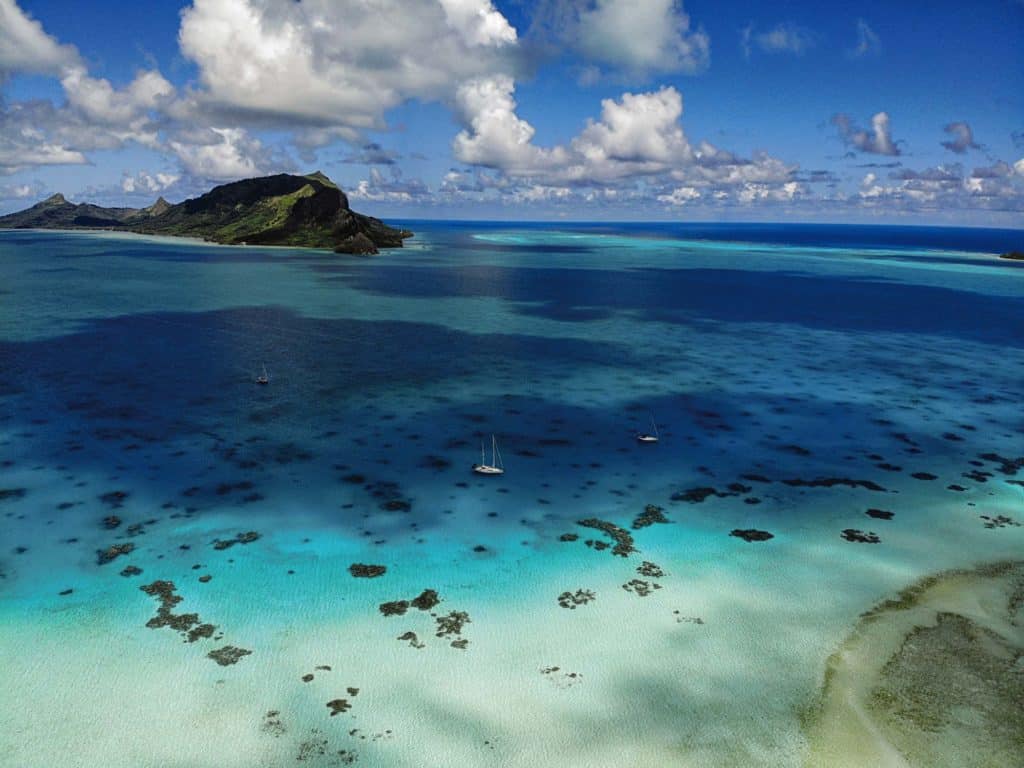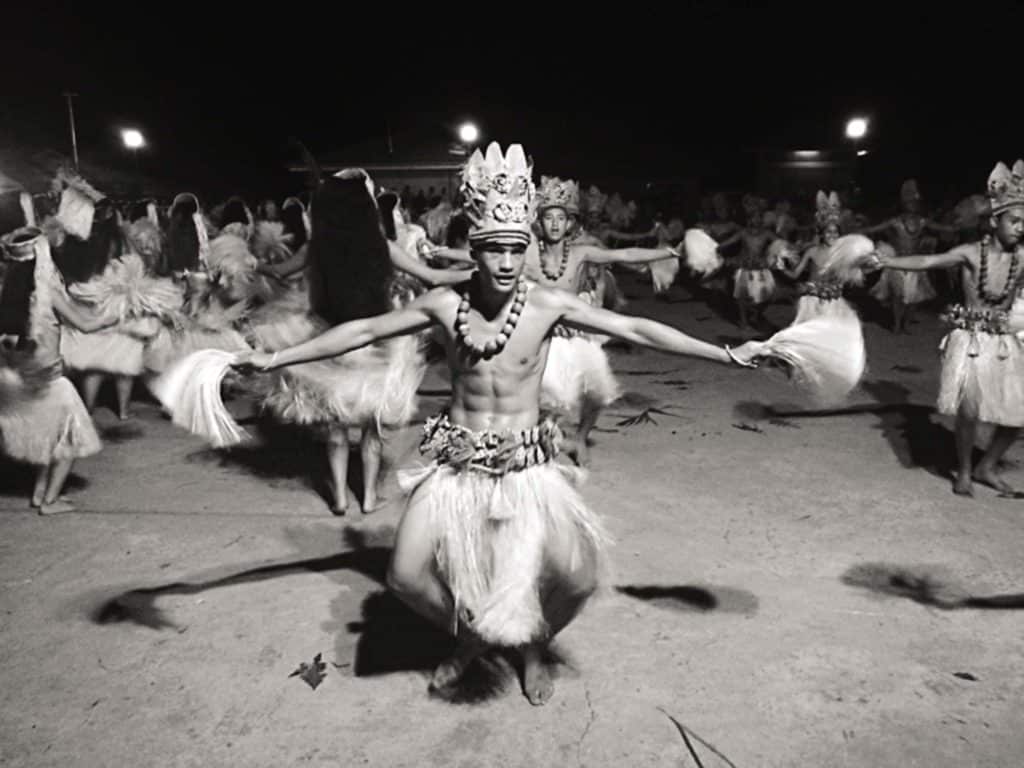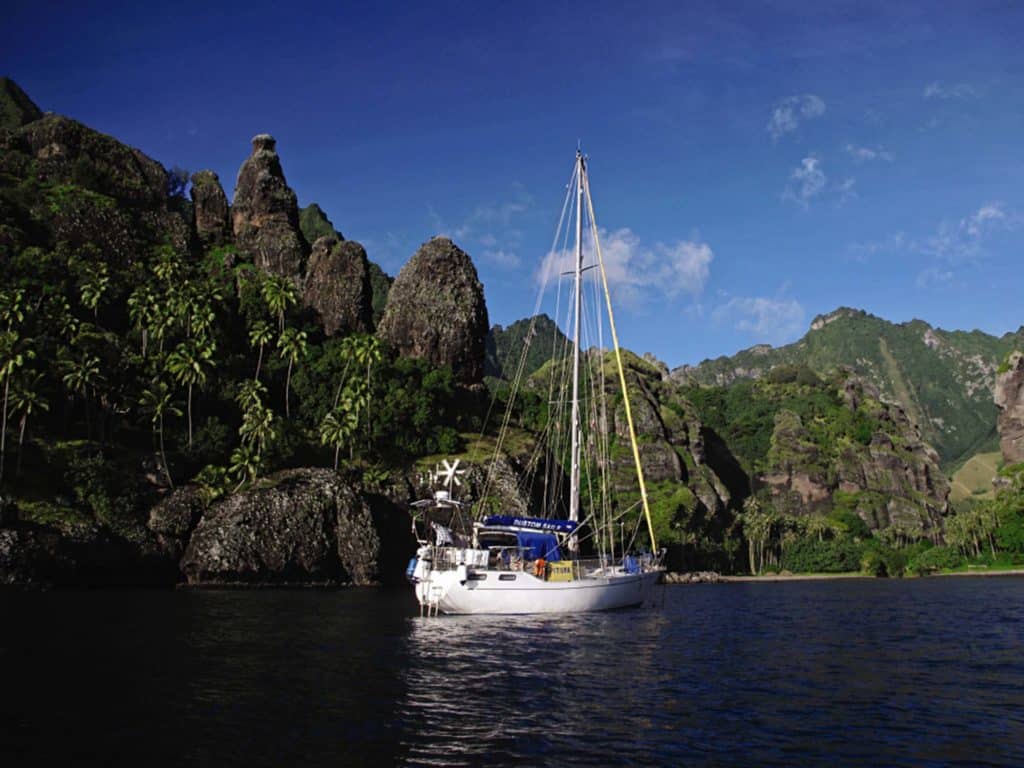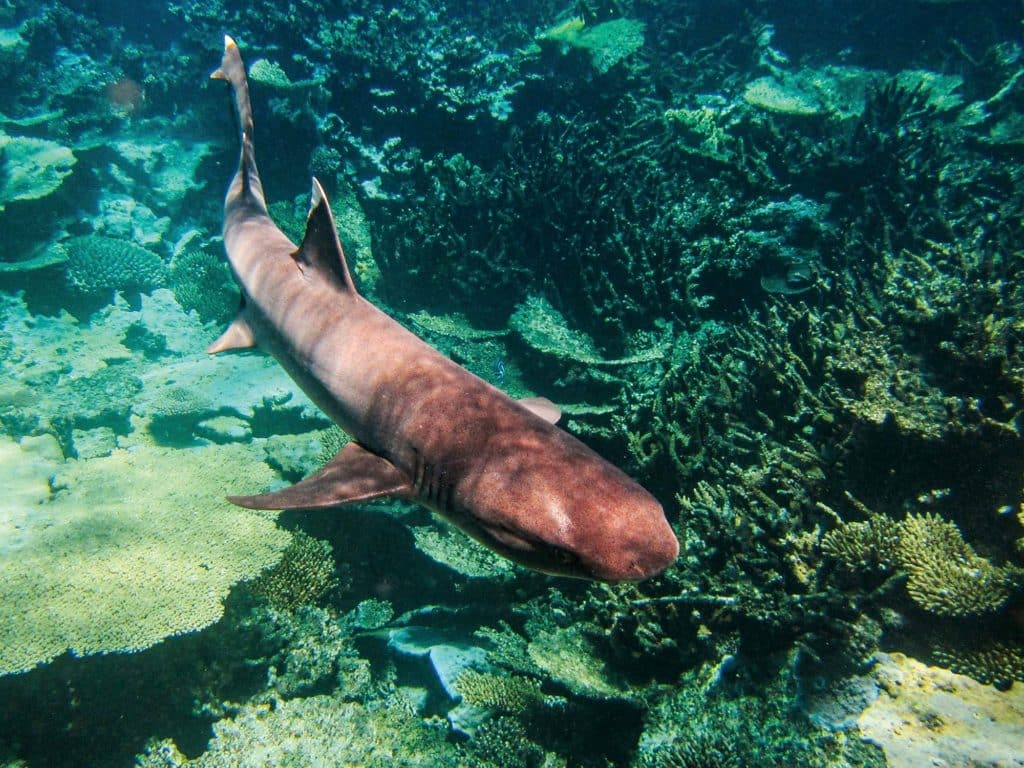
When we arrived in French Polynesia in May 2013, we saw the island group as a stopover on our way across the South Pacific. We’d heeded the advice of Jimmy Cornell’s World Cruising Routes and arrived after the end of the cyclone season, but we found lots of contradictory information in our research about everything from temperature to ocean swell to rainy seasons.
As it turned out, there’s a good reason for all the confusion. French Polynesia is a big place. It has 118 volcanic islands, makateas (raised atolls) and atolls that stretch out over an expanse as big as Europe. The five archipelagoes—Society Islands, Tuamotus, Gambier, Marquesas and Austral—have different languages, different cultures and quite different climates.
Based on our pre-arrival research, we expected to find a tropical climate year-round. That turned out to be true for the Society Islands but not the Gambier, where we shivered in temperatures below 68 degrees Fahrenheit. In August, we fled northward from the Gambier to escape the cold Southern Hemisphere winter, only to roll miserably in the Marquesas during the season with the highest swell.
Despite these rookie mistakes, we fell in love with French Polynesia and decided that we needed more time than just one season to explore this vast and diverse cruising ground. The temperatures and seasonal variations can be quite different across the five island groups. If you know your way around (like we do after eight years), you can find a pleasant corner for each season.

The distances between the archipelagoes are considerable—sometimes 800 to 900 nautical miles. What we’ve learned during our years cruising the region is that you can use the weather patterns to your advantage for fairly comfortable, easy passages.
With the benefit of hindsight, we would plan our arrival and itinerary for the first year in French Polynesia quite differently from what we did in 2013. Wind patterns and seasonal shifts play a major role in planning west-to-east passages between the island groups (see sidebar on page 55). Here’s more of what we have learned about each archipelago.

Marquesas
Sailboats crossing the Pacific in December or January from Central America or the Galapagos Islands should have fairly reliable wind on the way to the Marquesas. The northernmost group of French Polynesia, the Marquesas archipelago lies outside the cyclone belt, so there is minimal risk of running into a developing storm underway.
An early start means that you will arrive before the fleet of puddle jumpers starts crowding the anchorages. The islands’ high, rugged mountains are great for hiking, but the often murky, dark water discourages snorkeling—even though you may have impressive encounters with manta rays, pelagic sharks and groups of dolphins around the anchorages. Southerly swell, which makes the open anchorages very uncomfortable during southern winter, should not be a big issue at this time of the year.
With a bit of luck, you’ll spend quiet nights even without a stern anchor. No-nos (biting little flies) are always a nuisance, but the situation is better during the dry season from October to April.
Tuamotus
Continue toward the Tuamotus in April after the end of the cyclone season, when the region is still warm and not too windy. That’s a good time of year to explore the motus and lagoons, and to enjoy snorkeling the spectacular passes. The low atolls give access to an incredible underwater world (take nothing but pictures; the resources of atolls are limited), and from June to October, humpback whales are often sighted on the outer reefs and even in the lagoons.
Cyclones are rare in this archipelago, but sitting one out in the unprotected anchorages would be a nightmare, so we avoid cruising here in the cyclone season. During the strong trade winds in July and August, it gets quite cool. High waves and swell fill up the lagoons, so the currents in the passes are faster. Snorkeling is less fun, and the choice of anchorages is limited.
Society Islands
Head to the Society Islands in July, in time for the Heiva i Tahiti festival, which is filled with spectacular dancing and drumming events. The pleasantly dry, breezy winter weather (Southern Hemisphere winter) is ideal to go hiking on the high, mountainous islands of Tahiti, Moorea, Huahine, Raiatea, Taha’a and Maupiti.
Unfortunately, the coral in the lagoons is mostly dead, but there are some nice dive spots on outer reefs. Humpback whales roam the area between July and October.
Before the onset of cyclone season in December, it is time to leave again. The following months will be hot, humid and oppressive in the Societies. During an active South Pacific Convergence Zone, many lows pass over the islands and bring a certain risk of cyclones.

Austral Islands
Start looking for weather windows to sail to the Australs in October and November. The islands of Rimatara, Rurutu, Tubuai, Raivavae, and Rapa are spectacularly beautiful and have a thriving culture.
They are also the least-visited islands of French Polynesia. While southern summer between December and March would be the most pleasant time there, it’s also the cyclone season, and these islands are right in the path, particularly when the South Pacific Convergence Zone is active. The best time to visit is November and December, when it’s already warm but the cyclone season is only in its beginnings.
After March, it’s already southern autumn, when frequent depressions start moving by, sending high swell, strong winds and cold air masses.
Gambier Islands
Finding a weather window to sail to the Gambier Islands with favorable winds might require some patience. Convergence zones often bring northerly winds that facilitate easting. If you arrive in the Gambier in December or January, you can spend the pleasantly warm summer months exploring the numerous anchorages.
The Gambier has a mixture of high, mountainous islands with clear lagoons, healthy coral reefs and low-lying motus on the barrier reef. For us, it is the highlight of French Polynesia.
This archipelago has well-protected anchorages and a low risk of cyclones, particularly during El Niño-neutral periods, when the temperatures can rise to the mid-80s Fahrenheit, but the days are usually pleasantly breezy (there can be rainy days or even weeks).

Leave before the southern winter hits from July to September and the temperatures drop to 60 degrees, which feels much chillier than it sounds when it’s blowing hard and raining.
On the way west, there is still time to see more of the Tuamotus and Societies before heading on in the next sailing season, or you might even decide that you need another year or two to enjoy French Polynesia, just as we did.
Wind Patterns of the South Pacific
As a general rule, the trade winds blow predominantly from the east between February and April, from the east to southeast between May and November, and from the east to northeast in December and January. Disturbances are common: During southern winter, fronts of strong low-pressure systems move far in the south. During southern summer, convergence zones influence the weather patterns.
Sailing westward in the trade-wind belt is most comfortable during a stable period of easterly trades. Frequent troughs interrupt the trade winds in the Pacific, which is annoying during a long passage westward. It’s best to have a series of possible stopovers in mind in case the window does not last long enough to reach the planned destination.
When sailing eastward, we use those interruptions to gain easting. When a trough passes, the wind shifts from east to northeast, then north/northwest, followed by a calm period and sudden southern wind (when the convergence passes over your location), or back to east (when the trough moves by to the south). With some patience, it’s possible to sail from Tahiti eastward to the Tuamotus and then hop from atoll to atoll. The predominant southeast wind facilitates passages northeastward to the Marquesas from May to November.
Passages southeastward to the Gambier archipelago are better undertaken later in the year, when phases of northeast wind become longer and more predominant from December on. —BH
Birgit Hackl and Christian Feldbauer have been cruising for 10 years, eight of them in the South Pacific. They have explored westward to the Cook Islands and Tonga on their 41-foot S&S-designed Pitufa, but French Polynesia is their home base. They are currently in Fiji. Check out their blog for weather information, cruising guides and more.








